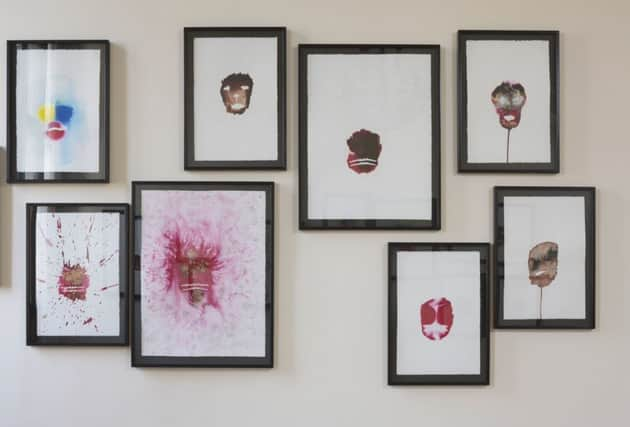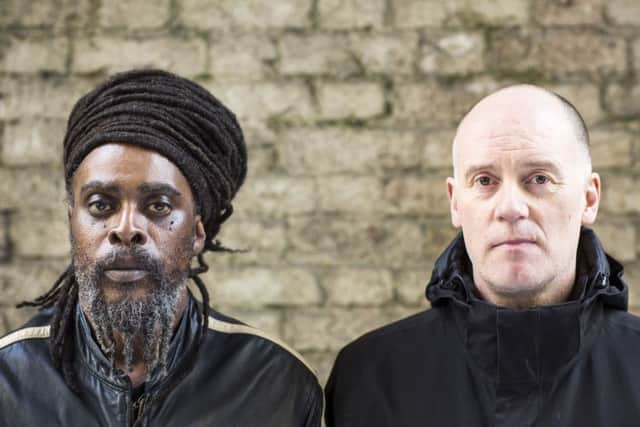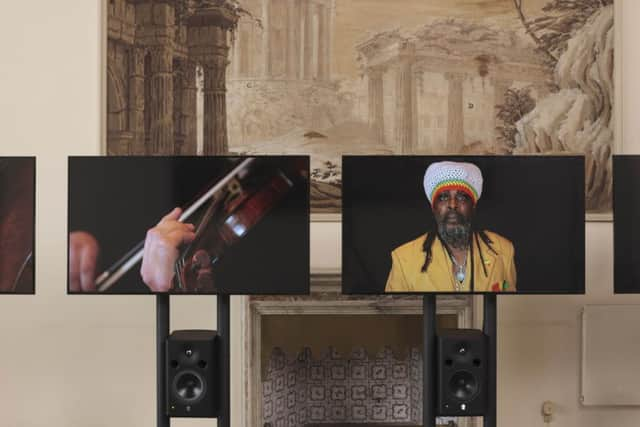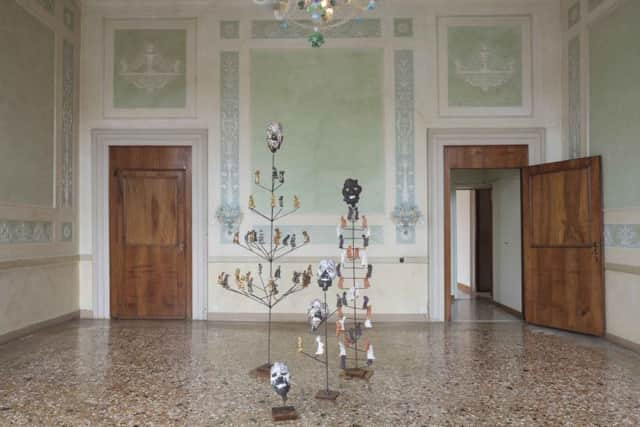Art review: Graham Fagen, Palazzo Fontana, Venice


Graham Fagen
Palazzo Fontana
Venice


Rating: ****
The voice in Robert Burns’s 1792 poem ‘The Slave’s Lament’ is that of an un-named slave labouring in a Virginia plantation but mourning their native Senegal, “torn from that lovely shore, and must never see it more”.
At the Venice Biennale this year one can hear those words voiced with melancholy, but also precision and authority, by the Jamaican singer Ghetto Priest. They drift towards you as you climb up the stairs of the Palazzo Fontana. The pink-fronted, 16th century palace, that faces the Grand Canal in Venice and is the new venue for Scotland + Venice this year.
Advertisement
Hide AdThe first thing that catches your eye as you ascend towards Graham Fagen’s exhibition is an ornate chandelier. But gradually something else comes into view: a coil of coir rope that seems to reach up to the richly painted ceiling above.


It emerges that the rope is a giant tree, a new work by Fagen, on a monumental scale. Though its coconut fibres seem soft and frayed as they lie on the terrazzo flooring, they are deceptive. Rope Tree is actually coir cast in bronze: sharp, intractable and sinister.
The maritime metaphor of rope in this great waterfront city becomes something more ominous. You might think of the noose prepared by a lynch mob. Or the shocking conclusion to The Making of Us, Fagen’s 2012 collaboration with theatre director Graham Eatough, which saw the main character in their filmed performance swinging from a rope.
Making an exhibition to survive the setting of a seven-month festival involving 87 official national presentations and more than 44 collateral events (Scotland’s distinct presence since 2003 is the latter) involves creating a show with stamina and steadiness but sufficient showbiz.
In the opening days it’s easy to see the place as just a jamboree for the great and good. But it’s also at this time of year when an acute awareness of some of the more unhappy contrasts – between the humble water buses and the nauseating super yachts, between the developing nations and the grand private foundations – can serve as vital friction that sparks a conversation about what culture is for.


In Fagen’s case it seems a life long project to understand one’s place in the world, but never to remain simply reconciled to it. Rope Tree is one of a series of works in this exhibition that draws on the artist’s longstanding interests: the metaphorical potential of plant forms, the musical rebellion of reggae and the words and deeds of Robert Burns, a totemic figure to whom Fagen struggled to relate in his Ayrshire upbringing.
Advertisement
Hide AdThis is no straightforward celebration of Burns’s word or legacy. As an impoverished young man in 1786, the poet placed a down payment on a passage to Savannah-la-Mar in Jamaica where he would have worked overseeing slaves on a plantation. He published a book of poems to raise the rest of his ticket and the success of it, the Kilmarnock Edition, changed everything for Burns. The complexity of our own position in a world that continues to invest in global exploitation, or invent new forms of it, remains an open question.
The exhibition is curated by Lucy Byatt form Hospitalfied House in Arbroath. Fagen and Byatt worked together in the late 1990s in Royston in North East Glasgow where local schoolchildren were invited to name a new rose. I have one of those pink roses still growing in my own Glasgow garden. It is called Where the Heart Is.
Advertisement
Hide AdBut when Fagen thinks about home, it is as well to remember that one of this most important works about place was Theatre, a scrupulously neutral examination of conflict made in 2000 when he was commissioned by the Imperial War Museum to reflect on Kosovo.
In this presentation we see evidence of what has been a growing nuance and emotion in Fagen’s work. Scheme for Lament is a room of 19 drawings of faces developed for his show ‘Cabbages in an Orchard’ at The Glasgow School of Art last year. They consist of ghostly emanations in wet watercolour, disrupted by crude white tombstones representing the artist’s own teeth.
In the next room Scheme for Nature are thin wire trees bearing ceramic forms created by squeezing the clay, as well as a more shocking clay masks, providing a visceral sense of flesh and bone. These works implicitly ask both what makes a person and what impressions a person might make.
In the final room of the show the music that has filled the space gains faces and bodies, with a display of the musicians on four video monitors and complex production by Adrian Sherwood on five sound channels.
Fagen first worked with Ghetto Priest back in 2005. Here he has enrolled classical musicians from the Scottish Ensemble and the composer Sally Beamish to rework Burns’s song. Beamish brings a keen ear that can accentuate the keening in the words. Ghetto Priest brings an unusually soulful voice and an unblinking gaze.
It seems to me this show has both staying power and clarity. As the music escapes the windows of the palazzo, the world below similarly creeps in: a passing police siren in this strange, sinking city, built on trade and exploitation. I think of what home might mean on a tobacco plantation in the 18th century and what it night mean now on the desperate boats that arrive from Africa and I become momentarily unmoored.
Graham Fagen: Scotland + Venice 2015 is at the Palazzo Fontana until 22 November, www.scotlandandvenice.com